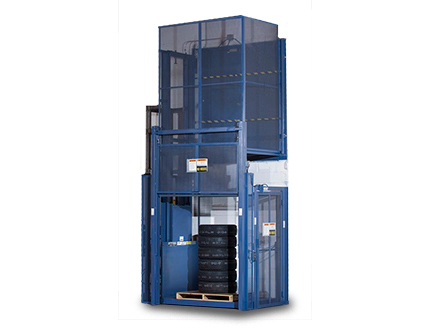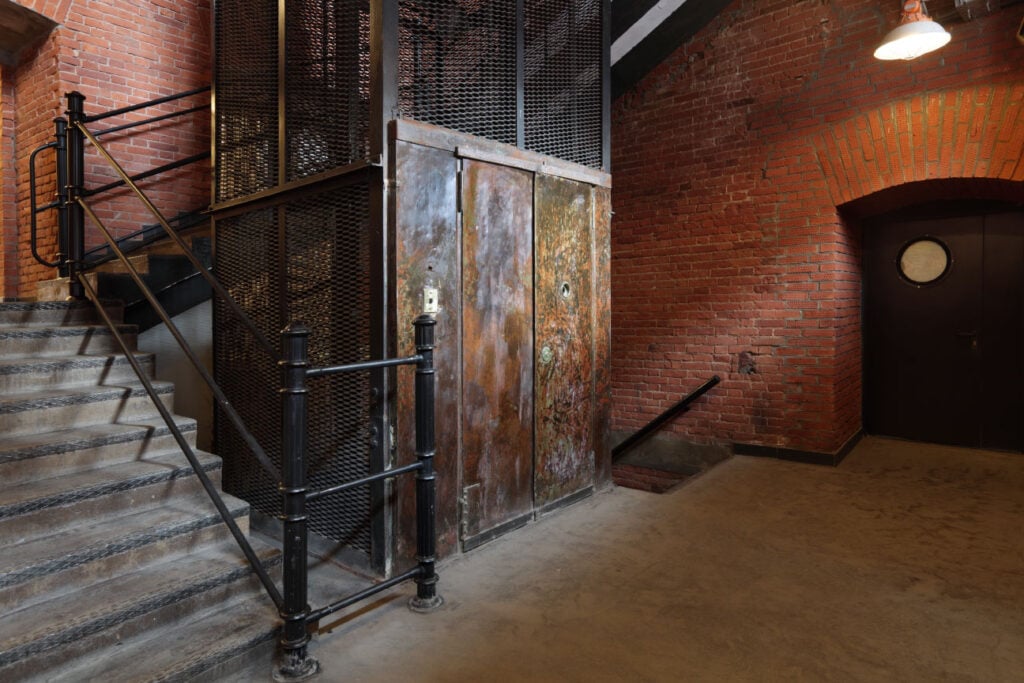What is a Freight Lift?
Freight lifts are crucial components of industrial and commercial facilities. They are designed to move goods, materials, equipment, and other cargo efficiently and safely. While many people associate freight lifts primarily with vertical reciprocating conveyors (VRCs) and freight elevators, it’s essential to recognize the versatility of industrial scissor lift tables. Each type of freight lift offers unique advantages, catering to various needs and applications in warehouses, factories, and other settings where material handling is essential.
Vertical Reciprocating Conveyors (VRC)

Efficiency and Cost-Effectiveness
Vertical reciprocating conveyors (VRCs) are celebrated for their efficiency and cost-effectiveness in transporting goods vertically between different levels, such as mezzanines. They are engineered to handle a range of load capacities and sizes, making them ideal for warehouses, manufacturing plants, and distribution centers. VRCs operate without requiring an operator to ride with the load, which enhances safety and reduces labor costs.
No Riders Allowed
One key safety feature of VRCs is the prohibition of riders. This ensures that the lift is solely used for transporting goods, minimizing the risk of accidents and injuries to personnel. This safety measure complies with industry regulations and enhances the overall safety of the workplace. VRCs also provide a more cost-effective elevator as they do not need to comply with code requirements for passenger elevators. VRCs have their own construction and safety code requirements.
Hydraulic or Mechanical Options
VRCs are available in both hydraulic and mechanical versions. Hydraulic VRCs are powered by fluid pressure and offer smooth and controlled movement, which is ideal for delicate or uneven loads. Mechanical VRCs, on the other hand, use motors and gear systems, providing robust and reliable performance for heavier and more frequent lifting needs.
High Travel Capability
Designed for high travel, VRCs can efficiently move goods between multiple floors or levels. This capability is handy in multi-level warehouses and distribution centers, where quick and reliable vertical transportation is essential for operational efficiency.
Compliance with ASME B20.1
To ensure quality, VRCs must meet the ASME B20.1 standard, which outlines the requirements for conveyors and related equipment. Compliance with this standard guarantees that VRCs are designed and installed with the highest safety and performance standards in mind.
Industrial Scissor Lift Tables

Simplicity and Safety
Industrial scissor lift tables are known for their simple yet effective design. They provide a safe, reliable solution for lifting goods, materials, and equipment. The scissor mechanism, powered by hydraulic or pneumatic systems, allows for precise control over the lift height, making it easy to position loads accurately.
Easy to Operate
One of the main advantages of scissor lift tables is their ease of operation. With user-friendly controls, operators can quickly and safely raise or lower loads to the desired height. This simplicity reduces the need for extensive training and allows for immediate productivity.
High Customizability
Scissor lift tables are highly customizable to suit specific needs. They can be tailored with different platform sizes, load capacities, and lifting heights. Additional features, such as tilting capabilities, rotating platforms, and safety rails, can also be incorporated to enhance functionality and safety.
Compact Size
Despite their robust lifting capabilities, scissor lift tables have a compact footprint, making them suitable for spaces with limited floor space. Their compact size allows them to integrate various workflows without significantly modifying the layout.
Compliance with ANSI MH29.1
Industrial scissor lift tables are designed according to the ANSI MH29.1 standard to meet industry safety and performance standards. This compliance ensures that the lift tables are safe, reliable, and capable of handling the demands of industrial applications.
Freight Elevators

Specialized Vertical Transportation
Freight elevators, or material lifts, are explicitly designed to transport heavy loads, materials, equipment, and cargo vertically within buildings. They are essential in warehouses, factories, and commercial buildings and must be moved between floors.
Specific Classes Allow Riders
Unlike VRCs, certain classes of freight elevators are designed to allow riders. This means that operators or personnel can accompany the load, particularly useful in scenarios where oversight or manual handling is required during transportation. Class B car elevators fall in this category as they allow the vehicle operator to remain in the vehicle.
Ultra-High Capacity
Freight elevators are built to handle ultra-high capacities, making them suitable for moving large volumes of goods or weighty items. Their robust construction ensures they can withstand frequent use and heavy loads, providing reliable vertical transportation in high-demand settings.
Durable Finishes
Freight elevators are often equipped with durable finishes and materials to withstand the rigors of industrial use. These finishes protect the elevator from wear and tear, ensuring longevity and reducing maintenance requirements. The durability of these elevators makes them a long-term investment for any facility.
Compliance with ASME A17.1
Freight elevators are designed and constructed according to the ASME A17.1 standard, which sets the safety and performance requirements for elevators and escalators. Compliance with this standard ensures that freight elevators operate safely and efficiently, providing peace of mind for facility managers and operators.
Conclusion
Freight lifts play a vital role in the efficient and safe movement of goods, materials, and equipment within industrial and commercial settings. Either with vertical reciprocating conveyors, industrial scissor lift tables, or freight elevators, these systems offer tailored solutions to meet a wide range of material handling needs. By understanding the unique features and benefits of each type of freight lift, businesses can select the most appropriate equipment to enhance their operations, improve safety, and boost productivity.





Hey do you folks have any more literature on this? I’m trying to decide what system we need.
Hi Tim,
Thanks for reading! Yes, we can get you detailed information on all of our freight lift systems. Our free consultation is perfect if you are looking for more information, and there is no obligation. You can call us directly during business hours or send us a message and we’ll be in touch shortly. Looking forward to speaking with you.